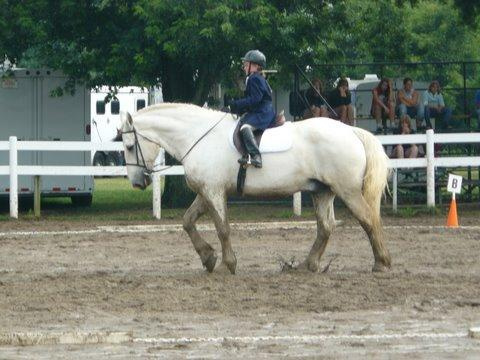I’m hoping to get some help understanding a perspective I keep running into at the local level.
In our county 4-H horse program (I’m in Iowa), English tack is not allowed in rail “performance” classes in my county only Western (or driving). The argument I hear most often from folks involved with the program is: “But if kids are showing in different tack, how would we judge them? English and Western are so different!”
But… are they really? At the heart of it, in a W/T pleasure class, we’re supposed to be evaluating things like rhythm, relaxation, quality of movement, manners, and way of going, right? Those should apply whether a horse is in a snaffle bridle and close contact saddle or a shank bit and western saddle?
I was talking to my farrier (a roper) the other day who was telling me about going to the event once known as Rolex while in farrier school in KY. He and a few of his buddies (roping/cutting guys) wandered over to the dressage warm-up just for fun. They apparently had so much fun watching and guessing which riders would score well. And sure enough, many of their picks did! They weren’t dressage riders, but they could still recognize softness, connection, balance, and correct movement when they saw it.
So if they can assess performance across disciplines at a high level like that… why can’t a judge watch a small group of 4-H kids jogging around the rail (some in English, some in Western) and still evaluate them fairly?
I’d love to hear thoughts from anyone who has worked through this in your county or state, or has experience judging mixed-tack classes. I know the Iowa 4-H rulebook allows for English tack, and that gymkhana/timed events at the state level allow any “safe tack” , but this mindset persists locally. And none of my lesson kiddos (in a rural area that loves the Fair) can participate…
Would love to hear your takes, especially if you’ve found language or reasoning that helps make the case for more inclusive rules at the grassroots level.
Thanks in advance!


